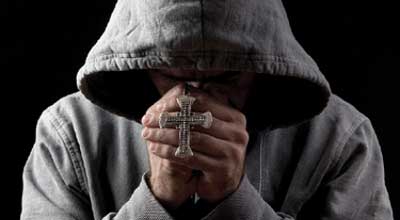I read an article in our local newspaper this week—“Another Fatal Shooting in Seattle’s Central District.” Another. There were several this month. I haven’t seen names of victims mentioned lately, though—not since a white father of two was killed by a stray bullet while driving his kids through that part of town last year.
That father’s murder received a lot of attention because he was caught by accident in the crosshairs of another confrontation in a neighborhood known for its gang violence. And perhaps it received attention because he was white. He looked like us and lived at a socio-economic level that those of us reading the newspaper tended to live. His children looked like us. He was running the kind of errand with his kids that I often run with mine. His death resonated with me.
Another fatal shooting, this week’s headline read. The newspaper didn’t mean another fatal shooting that included the white father of two that died last year. No, that father’s death was treated like a class by itself.
The newspaper this week meant another fatal shooting of a young black youth in the same vein as the two other shootings of young black youths this month, all likely gang related. When I read the headline and article, I understood immediately exactly what they meant when they said “another” in that context.
Then I walked into the community college where I teach on Monday. A soft-spoken African-American student of mine informed me that his brother was the victim in that article. Immediately, the story moved out of the category of “another” fatal shooting in the Central District into the category I had previously put the white father of two. It was senseless and awful, with a wake of destruction in the lives of the loved ones who survived him. That young man and his family didn’t deserve that.
Then I was convicted. Why did the white father easily enter that category in my head the moment I first read his story in the newspaper? Why did it take seeing the brother of the newest victim before I felt the awful, senseless tragedy of his death?
There are a multitude of complicated socio-economic and racial issues at play that I could never adequately dissect here. But I want to focus on one big point: Both victims were image-bearers of God.
God created both in His image. He stamped on both their beings indelible evidences of Himself. One image-bearer looked and acted more like me. Without even realizing it, I assigned more value to his life than the other. Today I am convicted that if I don’t get that the latest, unnamed victim is an image-bearer of God as much as the other, I probably don’t get the theological implications of Imago Dei very well at all.
I’ve been working with the Holy Spirit on seeing the homeless begging in my neighborhood as image-bearers of God with inherent worth. Today, I am reminded that youths possibly associated with gangs are too. The more deeply I internalize the worth of every image-bearer of God, the more I think I understand the implications of bearing His image for myself. I’m convicted that God wants me to understand this truth.
“‘Truly, I say to you, as you did it to one of the least of these my brothers, you did it to me’” (Matt. 25:40).
Today, my student came back to class determined and focused. He provoked in me deep admiration for his desire to build a better life for himself in the wake of his brother’s death. He reflected to me today beautiful things about his Maker. My Maker. And he reminded me that I don’t reflect God’s image because I am white and middle class.
Being human, made in the image of God, is much bigger than color or economic status, and it’s powerful to meditate on those things that unite us as image-bearers regardless of the smaller differences that separate us.
Adapted from Wendy Alsup‘s blog, theologyforwomen.org. Wendy has authored three books including By His Wounds You are Healed: How the Message of Ephesians Transforms a Woman’s Identity. She is also a wife, mom and college math teacher who loves ministering to women.












